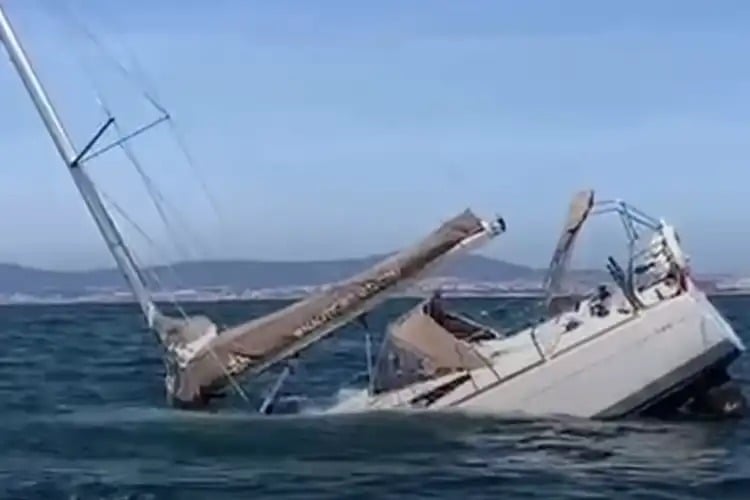 A tourist yacht was struck and sunk by orcas on September 13, 2025 (Credit: oceaniclounge/ Instagram)
A tourist yacht was struck and sunk by orcas on September 13, 2025 (Credit: oceaniclounge/ Instagram)
Since 2020, young Iberian orcas from a critically endangered subpopulation of fewer than 40 individuals have been ramming, and even sinking boats in the Atlantic Ocean. These incidents typically occur off the coasts of Spain, Portugal, and France during spring and summer. This is when the killer whales migrate to the area in search of food.
The latest series of attacks occurred on September 13, 2025, when two boats were targeted on the same day. Around 12:30 pm local time, a tourist yacht near Lisbon, Portugal, sank after being struck repeatedly. All five people on board were rescued by nearby boats. Shortly afterward, the orcas rammed and damaged another boat roughly 12 miles (20 km) away. The four individuals aboard were safely rescued, and the vessel was later towed back to shore.
Why are orcas ramming boats?
Researchers are not entirely sure of the reason for the orcas’ behavior. Some initially suggested that they might be seeking revenge on the boats. However, that idea was quickly dismissed. In May 2024, a group of scientists attributed the strange behavior to boredom. In the past, the orcas’ main food source, the Atlantic bluefin tuna was hard to find. The whales spent most of their time hunting. With plenty of tuna now available, the young orcas have more time for playful activities.
 Some scientists think the orcas are bored (Credit: orcanetwork.org)
Some scientists think the orcas are bored (Credit: orcanetwork.org)
In September 2024, scientists at the Bottlenose Dolphin Research Institute in Spain shared another idea. They think young orcas may be using boats to practice their hunting skills. Bruno Díaz López, the institute’s chief biologist, said that even though tuna are plentiful, they are hard to catch. The fish can grow up to 10 feet (3 m) long and weigh hundreds of pounds. They also swim in big groups and move very fast. To catch one, orcas take turns ramming a tuna until it is separated from the group.
“Maybe one orca hits, and then another one hits again,” Díaz López explained.
Once separated, the orcas chase and exhaust the fish. They then push it toward shallower water where it becomes easier to catch. The researchers believe sailboats are ideal for this type of practice. They move swiftly and quietly, much like tuna.
“This is like a training toy,” Díaz López said. “It’s a shame that we humans are in the middle of this game, but they are learning.”
To avoid encounters, scientists suggest staying away from areas where orcas are often seen. Making loud banging noises near the boat may also scare them. Boat owners can also make their vessels less appealing. For example, replacing smooth rudders with rougher ones could make the boats less fun for the orcas to play with.
Resources: Livescience.com, Independent.com, nypost.com